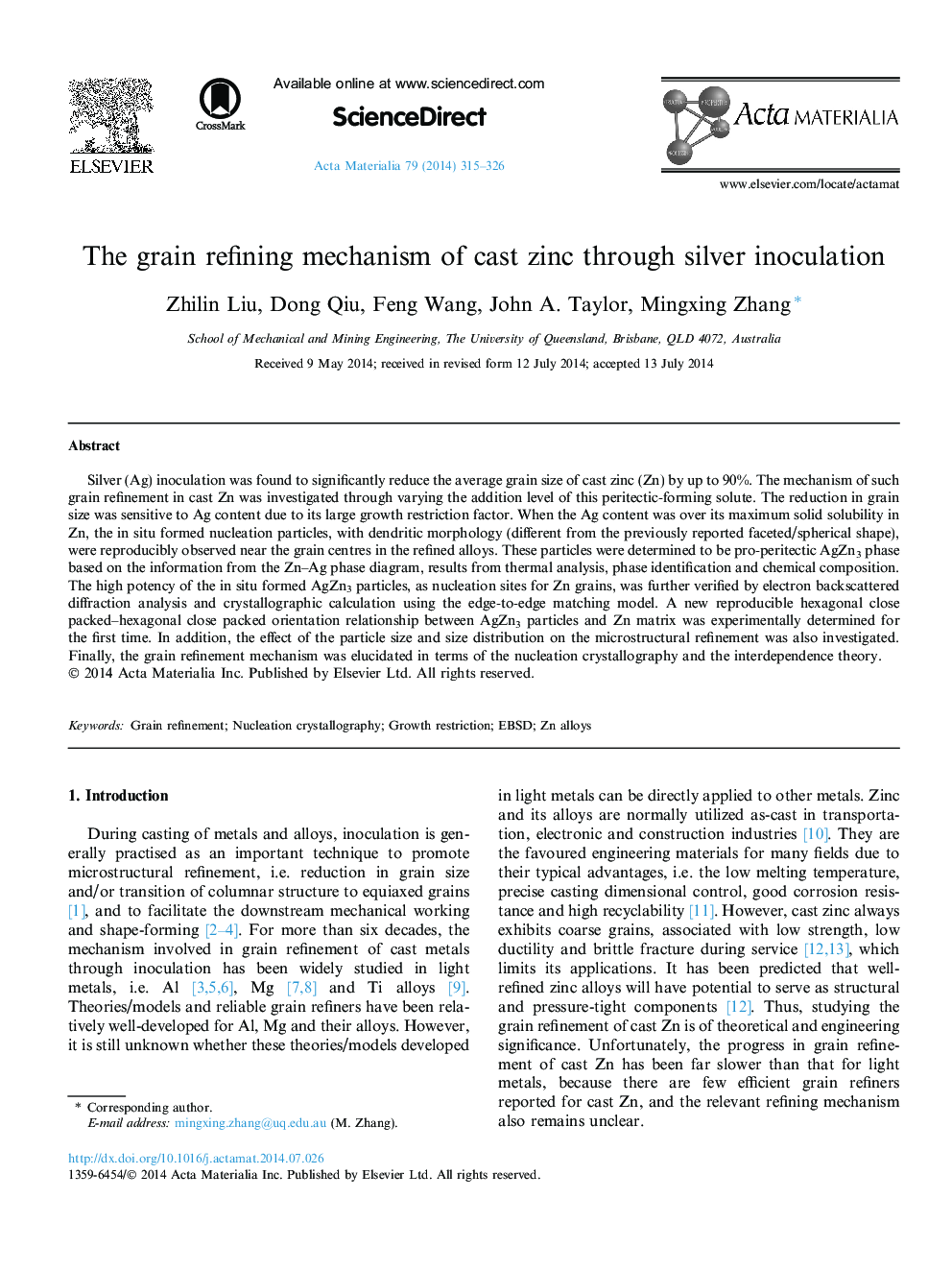| Article ID | Journal | Published Year | Pages | File Type |
|---|---|---|---|---|
| 7881203 | Acta Materialia | 2014 | 12 Pages |
Abstract
Silver (Ag) inoculation was found to significantly reduce the average grain size of cast zinc (Zn) by up to 90%. The mechanism of such grain refinement in cast Zn was investigated through varying the addition level of this peritectic-forming solute. The reduction in grain size was sensitive to Ag content due to its large growth restriction factor. When the Ag content was over its maximum solid solubility in Zn, the in situ formed nucleation particles, with dendritic morphology (different from the previously reported faceted/spherical shape), were reproducibly observed near the grain centres in the refined alloys. These particles were determined to be pro-peritectic AgZn3 phase based on the information from the Zn-Ag phase diagram, results from thermal analysis, phase identification and chemical composition. The high potency of the in situ formed AgZn3 particles, as nucleation sites for Zn grains, was further verified by electron backscattered diffraction analysis and crystallographic calculation using the edge-to-edge matching model. A new reproducible hexagonal close packed-hexagonal close packed orientation relationship between AgZn3 particles and Zn matrix was experimentally determined for the first time. In addition, the effect of the particle size and size distribution on the microstructural refinement was also investigated. Finally, the grain refinement mechanism was elucidated in terms of the nucleation crystallography and the interdependence theory.
Related Topics
Physical Sciences and Engineering
Materials Science
Ceramics and Composites
Authors
Zhilin Liu, Dong Qiu, Feng Wang, John A. Taylor, Mingxing Zhang,
